2019 ITG Conference Report - Day 5 - Saturday, July 13 - Daytime events
The 44th Annual International Trumpet Guild Conference - Miami, Florida (USA)
Special Daily Report • Compiled by Peter Wood
Photos by Michael Anderson, Norman Black, Benjamin Lowe, and Donald Sorah
Saturday, July 13 - Daytime events
Click here for more photos from the ITG Conference
Sarah Stoneback - Chop Balance: A Warmup for a Healthy and Balanced Experience on Trumpet
Dr. Sarah Stoneback’s morning warmup was well attended and expertly structured. She brought to bear her research on cognitive learning awareness via the four modes of learning: Cognitive Experience, Reflective Observation, Abstract Conceptualization, and Active Experimentation. Her overarching principle is to be flexible and embrace variety in order to stretch one’s learning threshold. Stoneback also presented the five principles of warming up, as observed in Braces and Brass by John Colson and Ron Stoneback. These include “Low before High,” “Soft before Loud,” “Down before Up,” “Slow before Fast,” and “Slur before Tongue.” The warmup session began with breath-attack long tones on a middle G and flowed into a few exercises inspired by James Thompson and Max Schlossberg. With excellent explanation between drills, she moved on to articulation drills and target practice with a final melody played as a group. (DG)
Sean Butterfield and Vern Sielert Youth Day Warmup: Building YOUR Routine
Sean Butterfield and Vern Sielert guided the students of Youth Day through a comprehensive warm-up routine designed to help reset the foundation of playing from the demands of the previous day. The presenters emphasized that everything you include in a warmup must be customized to your own needs and abilities. Butterfield and Sierlert used stretches and breathing exercises to prepare the participants’ bodies to play for the day and led the group through several mouthpiece and leadpipe exercises to focus on developing a pure sound. Through their routine, the presenters helped students simplify the fundamentals of trumpet playing to creating a good sound, changing pitches, and articulating. With these ideas, Butterfield and Sielert expressed the importance of always maintaining a musical focus, even in the most basic of exercises. The students learned how to develop successful habits of playing that they can incorporate into their own careers. (EM)
ITG Youth Competition, Junior Division
The Junior Division of the ITG Youth Competition consisted of students age 15 and under performing solos from the standard trumpet literature. Jade Park was the first to perform and played a wonderful rendition of the Arutiunian Concerto. Her powerful sound captivated the audience from the opening and was highlighted by her impressive technique and clear articulations. Benjamin Black gave a compelling performance of the first movement of the Hindemith Sonata. His rhythmic precision was notable in this demanding piece. Ruoshui Min followed with the Hansen Sonata. She displayed marvelous control of the instrument while performing at soft dynamic levels. Sam Ferguson’s rendition of Balay’s Petite Piece Concertante was expressive and passionate. Joshua Kucharski followed with Arban’s Fantasie Brilliante. This work highlighted his talents as a musician, namely his clear tone, precise technique and articulations, and ability to travel through all registers of the instrument. Paul Kwak continued the competition with the first movement of the Ewazen Sonata. Kwak’s lush tone and beautiful lyricism complemented the style of this work well. Yuntong Li also performed the Hansen Sonata. He displayed an impressive ability to transition seamlessly between legato and fanfare styles. Oliver Zhang was next, performing the second and third movements of the Hummel Concerto. His clear tone at soft dynamics created a wonderful atmosphere in the second movement. The third movement allowed Zhang to showcase dexterity through technically demanding sections. Oliver Robinson gave an inspiring performance of Höhne’s Slavische Fantasie. His ability to maintain a beautiful sound in all registers through various dynamic levels was truly impressive. The final performer of the competition was Jack Bricklemyer, playing Arban’s version of The Carnival of Venice. This work allowed Bricklemyer to display his wide range as he progressed through multiple variations. After hearing all ten performers, the judges truly have their work cut out for them. Congratulations to all of the finalists for their wonderful and inspiring performances! (SS)
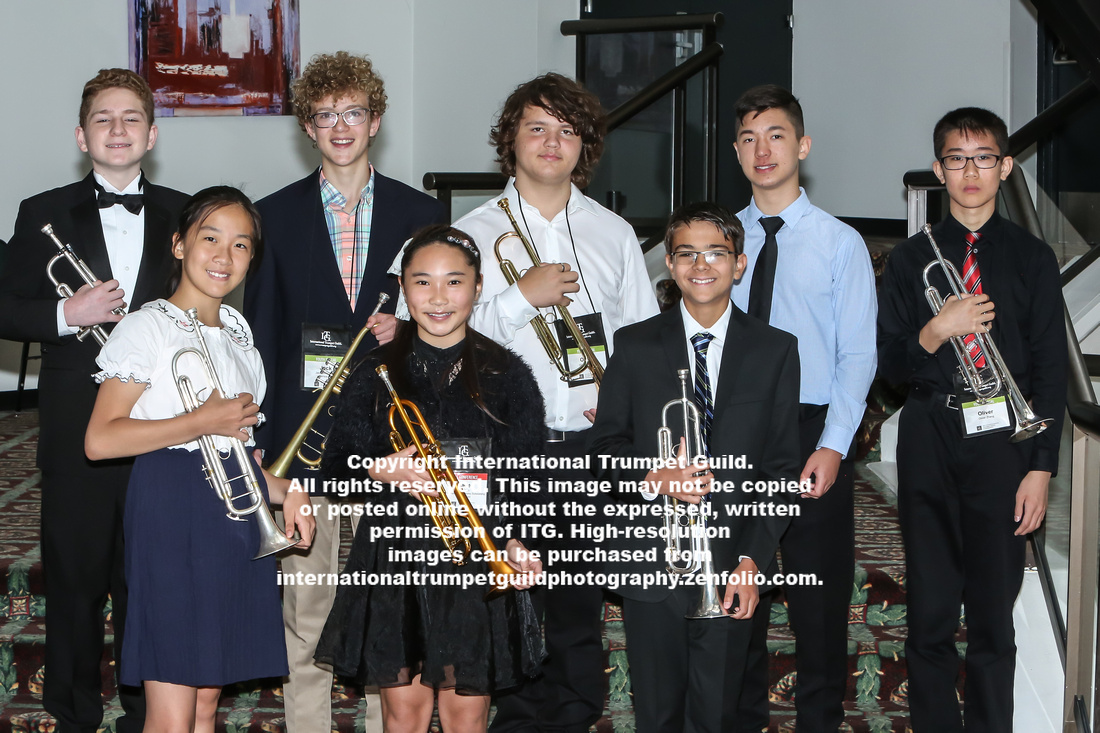

Peyden Shelton Lecture - From Big Weight Loss to Big Problems: Addressing the Negative Effects of Weight Loss on Trumpet Performance
Beginning with a charismatic welcome, Dr. Peyden Shelton presented a wonderful lecture that addressed the benefits and challenges in trumpet playing that can arise from weight loss. Identifying several common issues such as a loss of range, endurance, and clarity of articulation, Shelton shared his own personal experience and provided detailed plans and exercises to regain control and finesse on the trumpet. Taking time to demonstrate his approach to building range, endurance, and articulation, Shelton suggested that players always focus on sound and be patient with the process. Equally important is the ability to identify and assess progress while being willing to reach out to peers, mentors, teachers, or medical professionals for help along the journey. Monitoring positive progress with a daily practice journal was also encouraged, and as a last resort, changing equipment can also be beneficial. Everyone in attendance enjoyed the lecture and benefitted from Shelton's knowledge on the subject. (SW)
Jeremy Brekke Lecture - “Visualize” the Possibilities: Using a Mouthpiece Visualizer for Efficient Trumpet Playing
Dr. Jeremy Brekke’s demonstration and discussion about mouthpiece visualizers centered around the desire to play the trumpet more efficiently. He noted that some trumpeters work too hard to play the instrument and that visualizers can be used to make the minor adjustments necessary to increase ease of play. While some simply use this tool to observe the alignment of the aperture within the mouthpiece, Brekke focused more on using the visualizer to create a clear, pure buzz with as little effort as possible. Once the desired sound was achieved on the visualizer, he then began the process of transferring that sound concept to the trumpet. Benefits include greater endurance, added range, enhanced response, and improved consistency. It is important to remember that less is more in this case. Just a few minutes of daily use can yield significant results. (AD)
ITG Youth Competition, Senior Division
Few things at this year's conference proved as inspiring as listening to the Senior Division of this year’s ITG Youth Competition. Each competitor, regardless of award, performed with poise and maturity, and all were accompanied by the exceptional Rebecca Wilt on piano. Judges included Jesse Cook, Sarah Stoneback, and Richard Tirk. Ko-Te Chen, who earned third place in the contest, presented an expressive rendition of Enesco's Legend. A strong upper register and wide range of dynamics served the music well. Stefan Filip performed two movements from the Senee Concertino. His sweet tone and sparkling articulation earned him second place in this year’s event. With an impressive performance of Höhne's Slavische Fantasie, Sung Ho Wui was the competition winner. His warm tone, technical facility, and stylistic sensitivity impressed the judges and delighted audience members. This was a very impressive showing by some talented young artists with bright futures ahead. (ED)
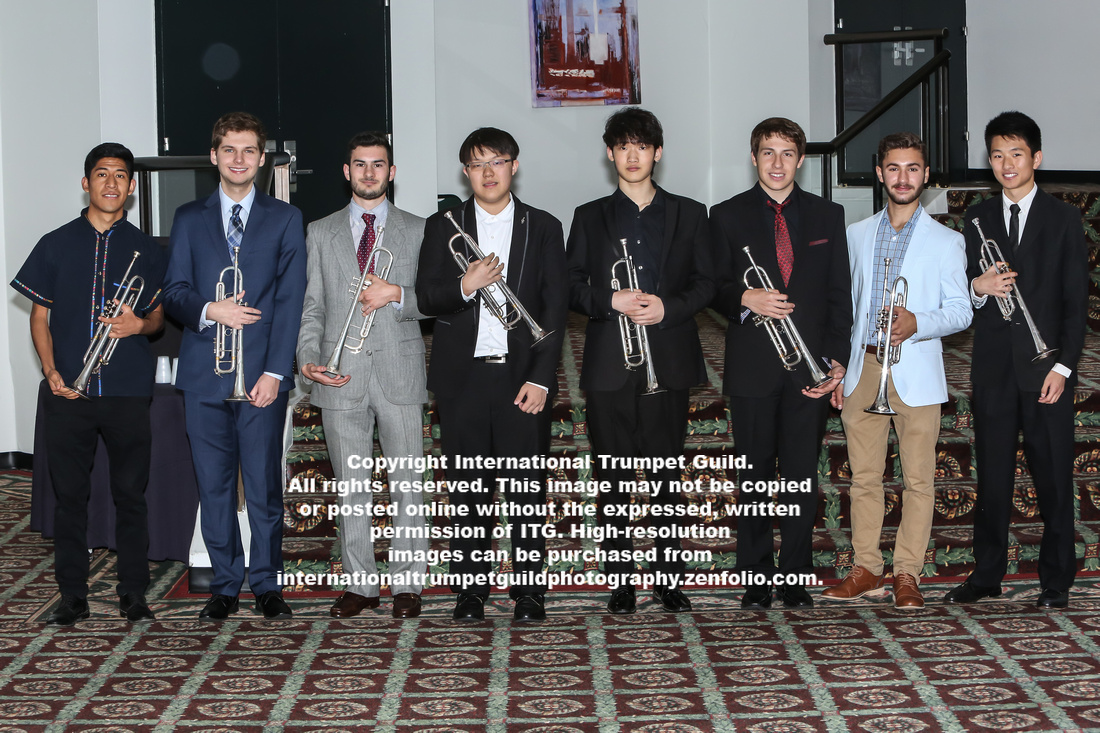

Grant Manhart Lecture - Born Lucky or a Learned Skill? William Adam’s Concepts of Trumpet Range
What’s the problem with range? Is it the trumpet or the mentality? Dr. Grant Manhart presented William Adam’s concepts as an approach to expanding range. Adam’s concepts are not a method; they are a mentality. Based on excerpts from an interview, Manhart began by explaining Adam’s approach to the science of trumpet playing. More importantly, he emphasized that there must be a strong mental picture of the sound we want. Manhart described Adam as the “eternal optimist” who believed that a positive mentality and sound concept is 90% of playing the trumpet. Playing straight down the horn with an amazing mental sound concept allows the player to ascend in register with ease. Manhart demonstrated William Adam’s concepts that can expand a player’s range and open a new sound palette through positive mental image of their sound. (SB)
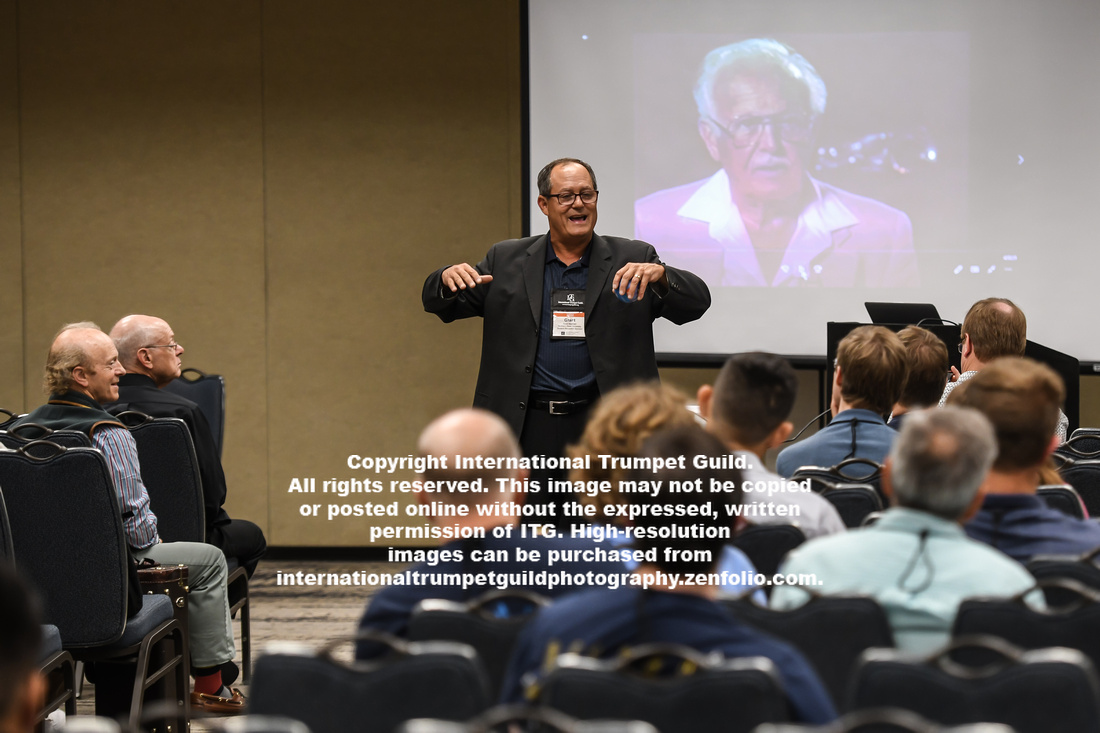

Fabio Brum Recital - EGREGORE+
Fabio Brum treated his afternoon audience to a truly spectacular recital, performing his entire program from memory. He opened with an exciting performance of Charlier’s Solo de Concours on his four-valve cornet and followed with two pieces that were composed for him. Efraín Oscher’s Latin Rhapsody for trumpet and orchestra will be on Brum’s upcoming album, and this was the world premiere of the version for trumpet and piano. The three-movement work was full of Latin character and various dance rhythms as the soloist moved between trumpet, flugelhorn, and piccolo cornet with great ease. The other work written for Brum was Febre Do Rato (Rat’s Fever) by ngelo Martins, an incredibly demanding unaccompanied work that portrays the migration of Brazilian populations from small towns into the largest cities. Pianist Kasia Wieczorek was an excellent collaborator as they closed the recital with Thorvald Hansen’s Sonata and Eugene Bozza’s Rustiques. It was a delight to hear such inspired and genuinely artistic interpretations of these standard works. (NV)
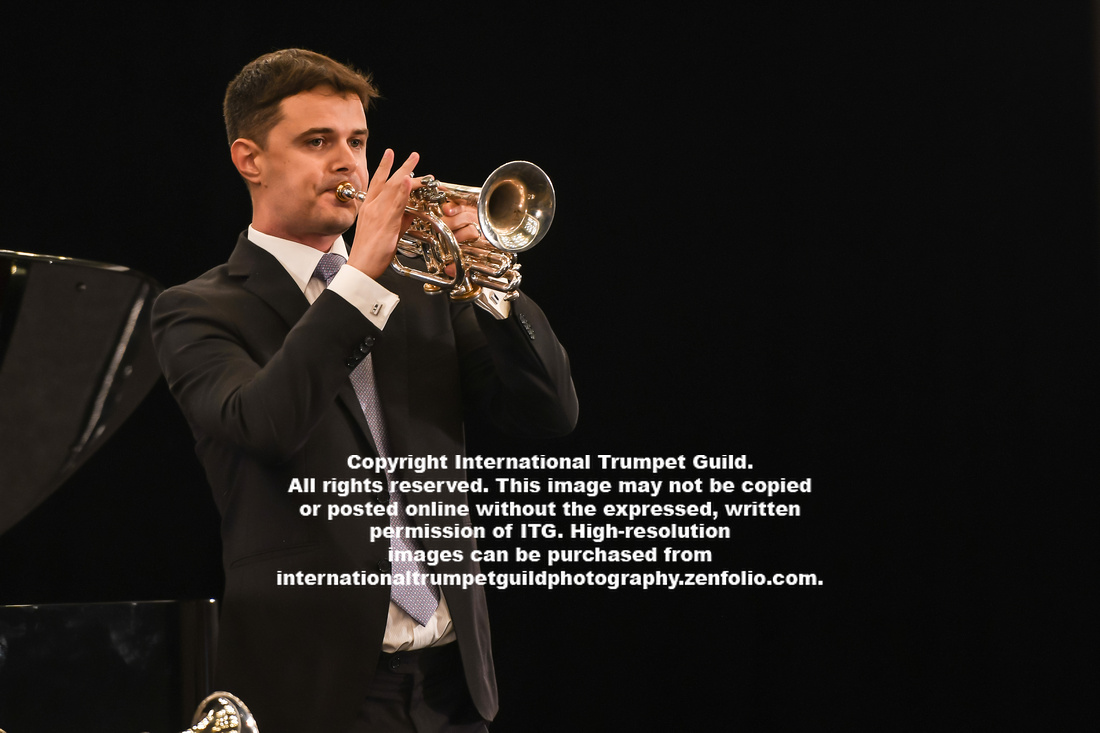

A Brass Odyssey: Using the Natural Trumpet and the History of Lip-Blown Instruments to Teach Beginners
Chris Hasselbring and Kirsty Montgomery gave a lively and informative session on their work with their educational initiative Brass for Beginners (BfB). Founded in 2013, BfB teaches the fundamentals of brass playing through an interdisciplinary curriculum using “child-friendly” plastic natural trumpets. Using these affordable (and indestructible) instruments, school-age children gain experience with natural trumpets, which can lead to further study of any brass instrument. Pitched in C (A=440 Hz), the BfB Natural Trumpet can fit into any general music classroom to play with recorders and Orff instruments. In addition, the BfB curriculum teaches history, brass instrumental development, and repertoire through the character of Ragnar, a caveman who travels through time. Hasselbring demonstrated typical classroom interactions with eight volunteers using BfB trumpets in activities like “The Practice Cave” and “Pharaoh’s Trumpeters.” The BfB website (http://www.brassforbeginners.com) also features videos from such contributing artists as John Wallace, Brian Shaw, and Terry Everson. (EK)
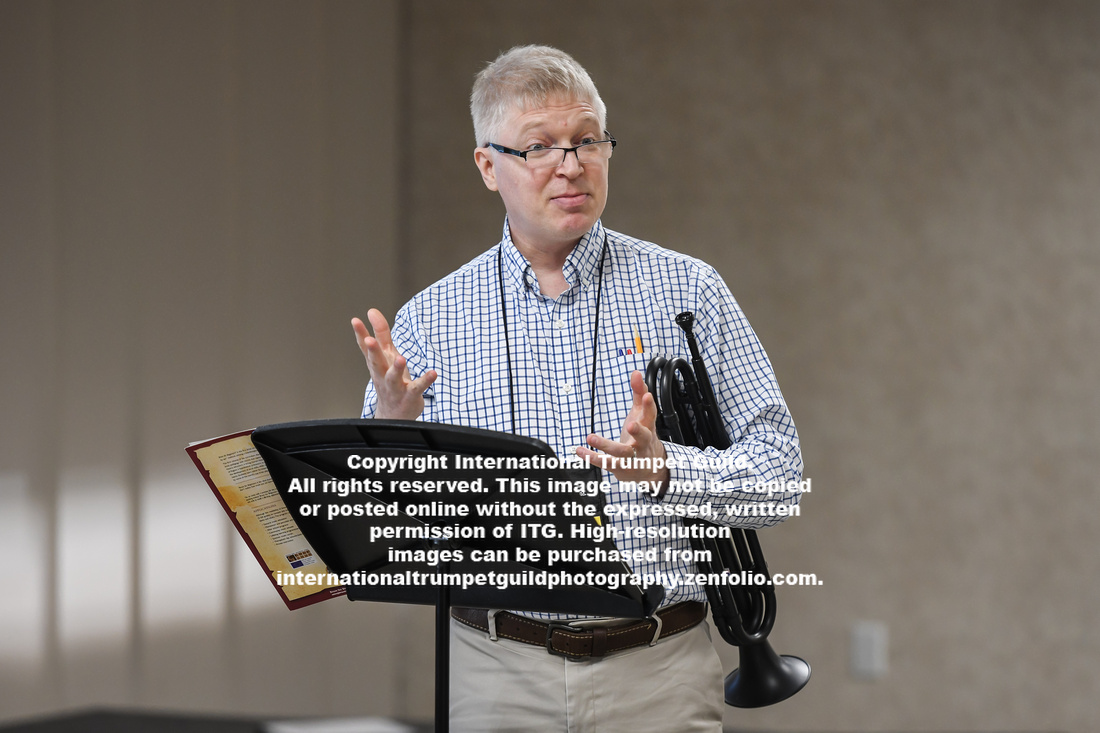

Seraph Brass Recital
The all-female Seraph Brass presented an outstanding recital, “The Music of Classical Masters and Contemporary Women.” The group alternated between works for brass quintet and sextet, with each ensemble member demonstrating beautiful lyricism and stunning technique. The trumpeters in the group––Mary Bowden, Raquel Samayoa, and Jean Laurenz––traded leadership roles throughout the recital, performing difficult exposed solos and lengthy technical passages on flugelhorn and B-flat, C, E-flat, and piccolo trumpets. The low-brass trio of Rachel Velvikis (horn), Hana Beloglavec (trombone), and Gretchen Renshaw James (tuba) performed with incredible dynamic and stylistic range, showcasing broad power and impressive delicacy. Champions of new music and female composers, Seraph performed three works in this category: Asteria by Catherine McMichael, Khirkiyaan (Windows): Three Transformations for Brass by Reena Esmail, and Copperwave by Joan Tower. Each work had unique technical and musical challenges, which the ensemble navigated with ease throughout the unique and entertaining program. (MY)
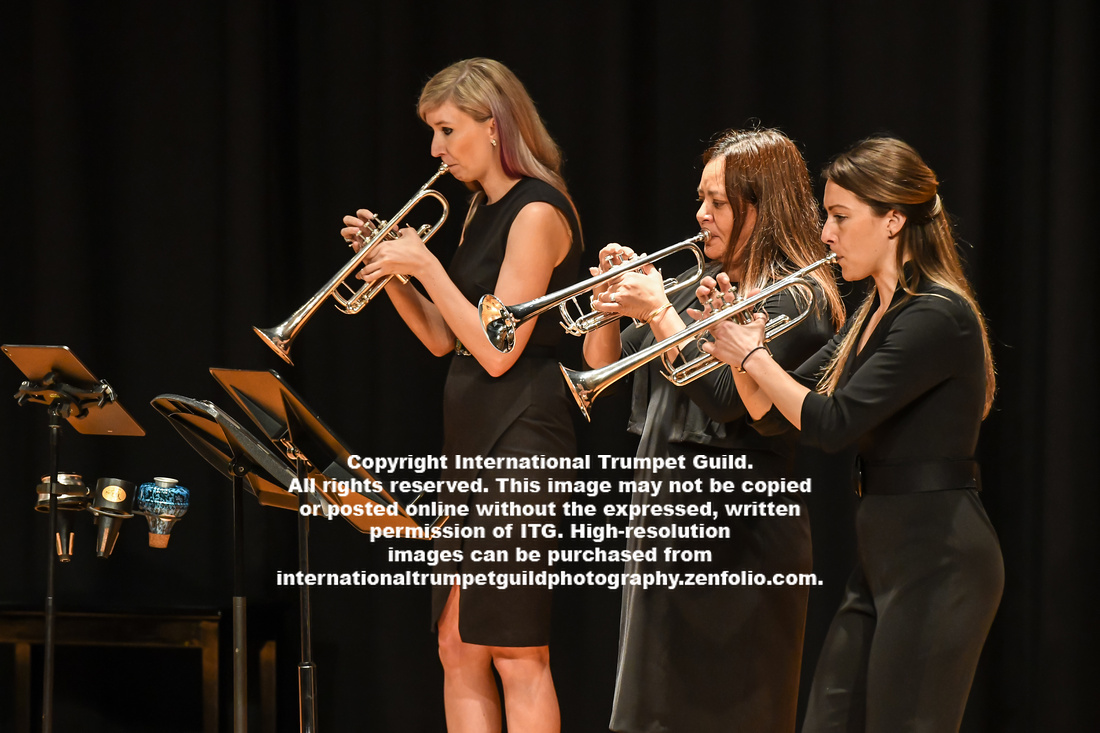

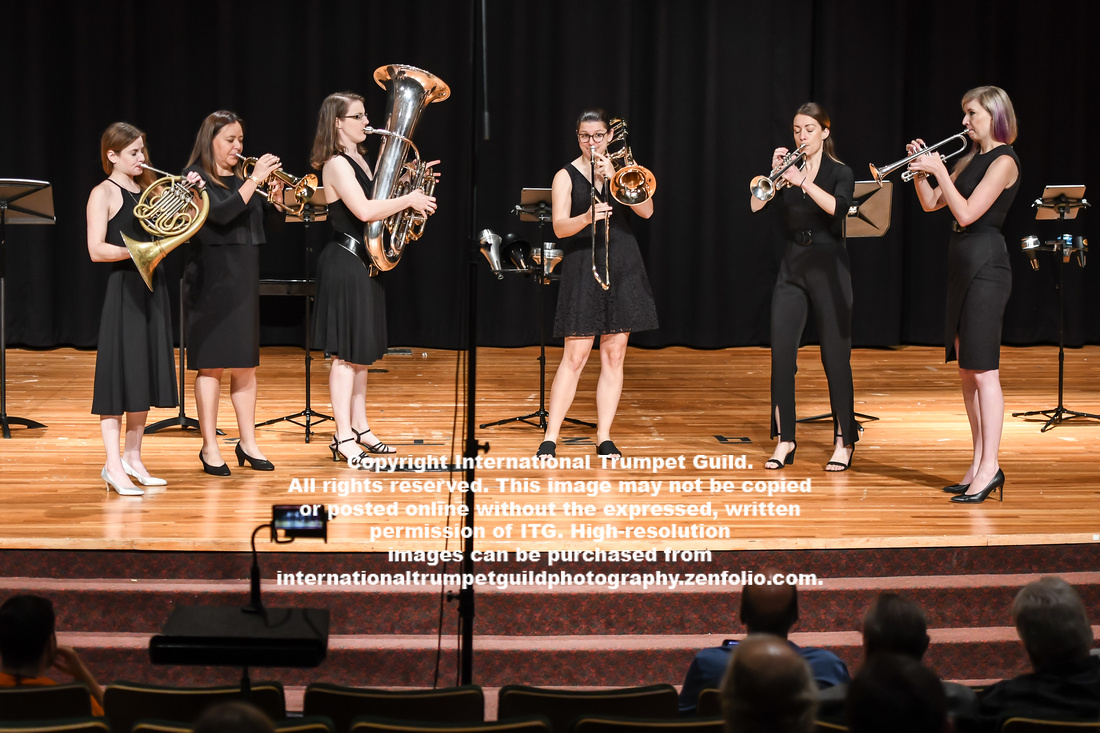

Sean Jones Recital
Trumpeter Sean Jones, along with Zach Bartholomew (piano), John Yarling (drums), and Chuck Bergeron (bass), formed a communicative and good-humored combo. Their set included Dizzy Gillespie’s Ow!, three original compositions by Sean Jones, Horace Silver’s Song for My Father, and Freddie Hubbard’s Dear John. In Jones’s personal and eclectic program, he displayed the sound concept of a soprano saxophone, interspersing space between impossibly rapid flourishes and the “dirtiest” blues riffs. He shined in unexpected places: a dead-tone sustain as pure as a sine wave, the ethereal sigh of a closely amplified harmon mute, and a humble but self-assured demeanor. From funeral dirge waltz to frenetic bop, Jones’s program stunned and delighted attendees. (MM)
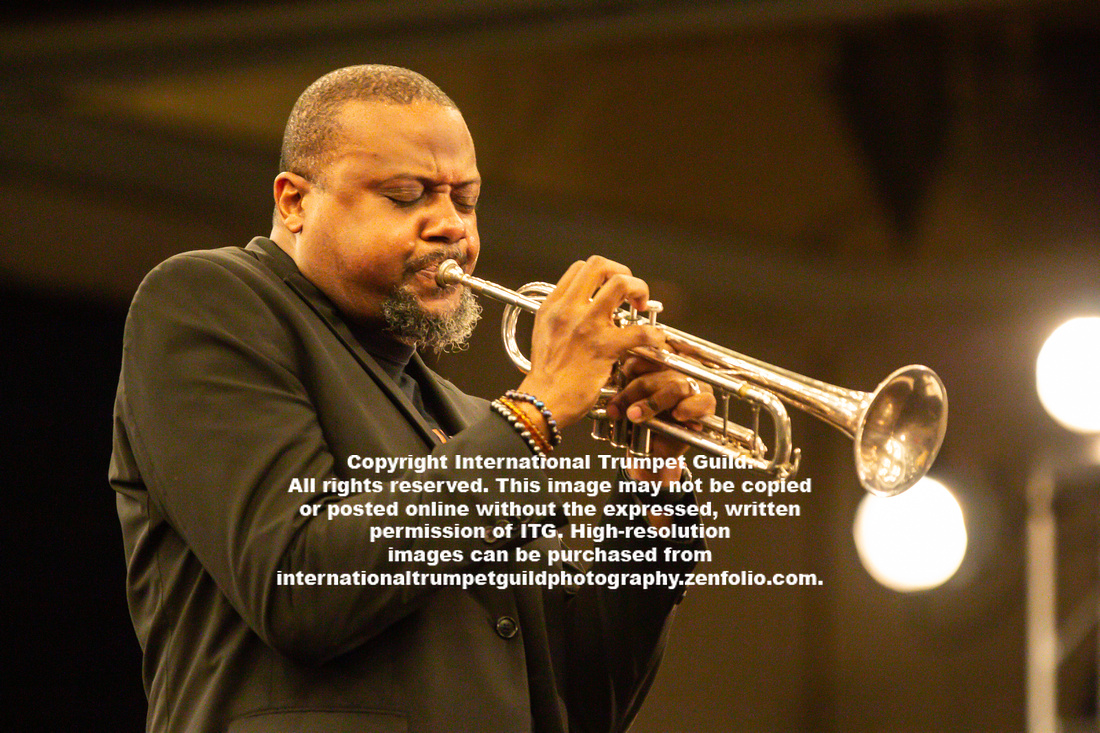

Festival of Trumpets
The Festival of Trumpets opened with an exciting world premiere of Jason Dovel’s Sonitus Fanfare for seven Baroque trumpets. The work highlights the pomp and pageantry that Baroque trumpets can bring to any modern composition. The work explored all areas of range and presented wonderful idiomatic motives that herald the Baroque trumpet’s historic past.
Joshua Hobbs’s Soar grabbed the audience right from its opening fanfare and held their attention to the last measure. Centered around a short, double-tongued motive, the work provided each performer a chance to share the spotlight in both technical and lyrical musical lines.
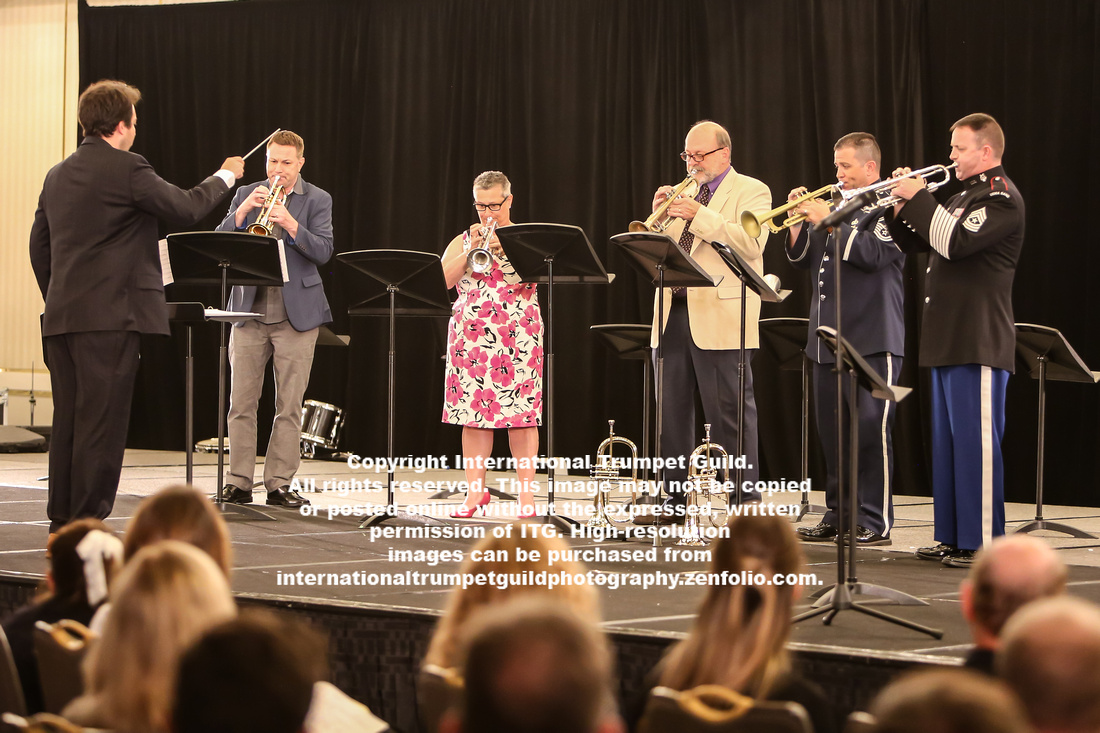

Aaron Hodgson’s arrangement for six trumpets of Media vita by Riho Esko Maimets opened with a lone solo trumpet melody presenting reveries of ancient times or distant lands. This melodic line was slowly shared and harmonized throughout the entire ensemble before reaching a climactic finish.
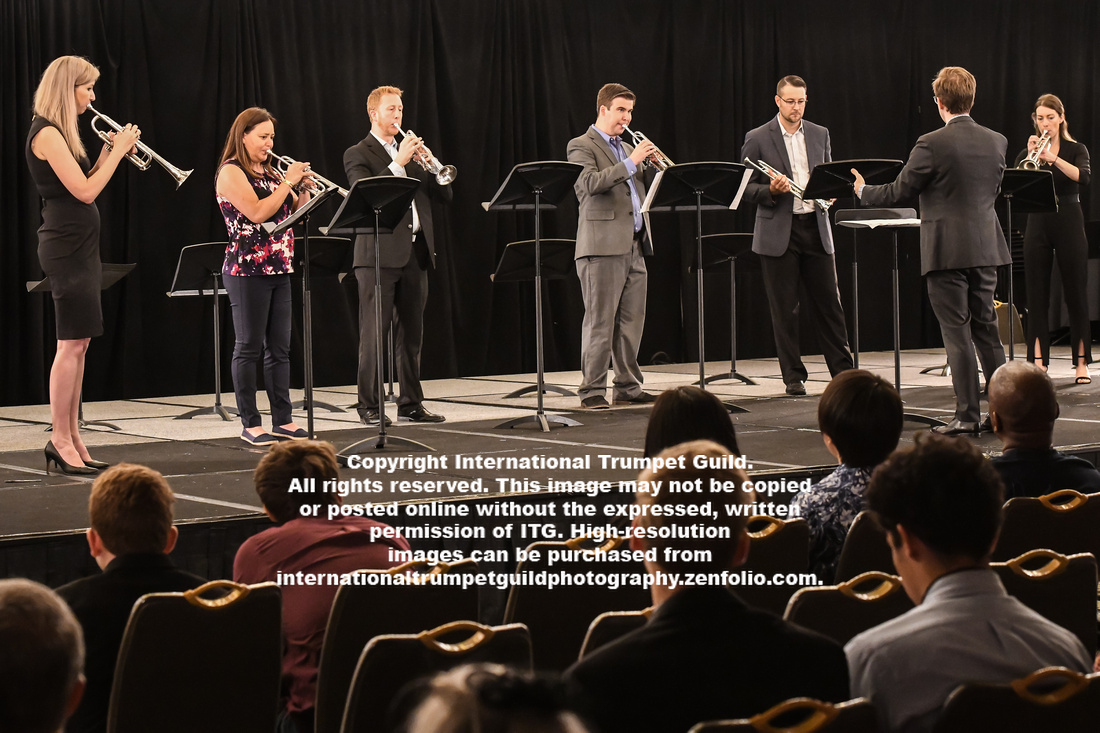

The Gaze by Richard Gillis brought a unique flair to the traditional trumpet ensemble repertoire. The work’s grooving ensemble sections and improvisatory solo moments allowed the ensemble members to flex their “jazzier” side.
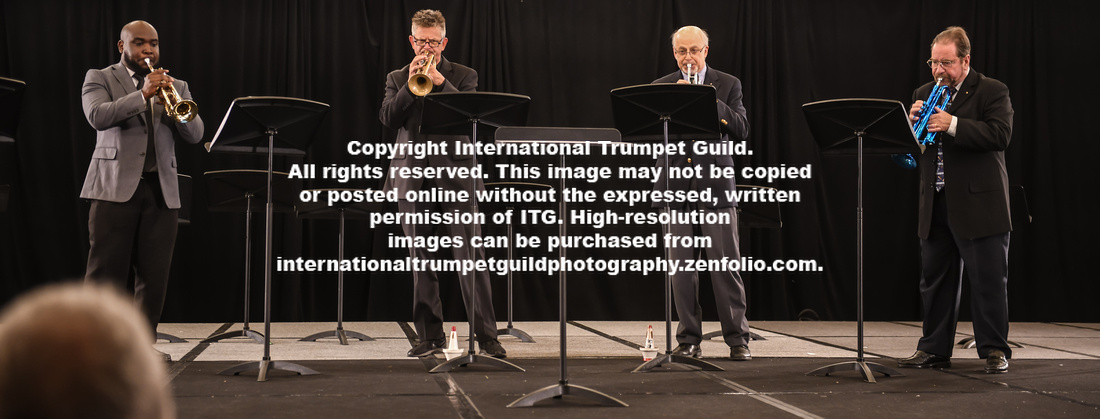

Rob Roy McGregor’s Essay opened with a hypnotic and dark melody that slithered its way through the ensemble using different colors and melodic alterations. The piece featured various mutes that gave the work a wonderfully eclectic palette of sound for the listener to enjoy. Erik Morales’s transcription of Glinka’s Ruslan and Ludmilla Overture hit the audience right off the bat with its triumphant opening. The fast scalar passages and passing ascending lines led the audience through each section as it built to its final climactic notes.
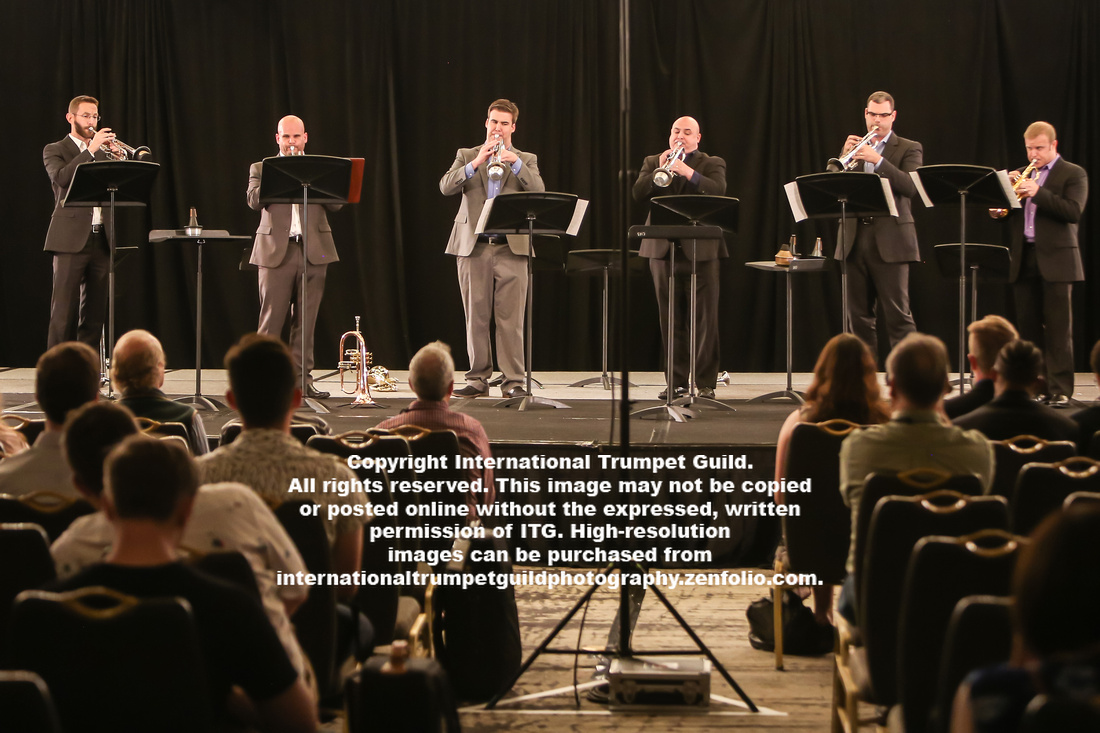

Daniel Gianola-Norris’s arrangement of Amy Beach’s Gavotte, Op. 36, No. 2 presented a wonderful showcase of this traditional work. The motives were beautifully harmonized and accentuated with rhythmic lines that highlighted the many idiomatic traits of the trumpet.
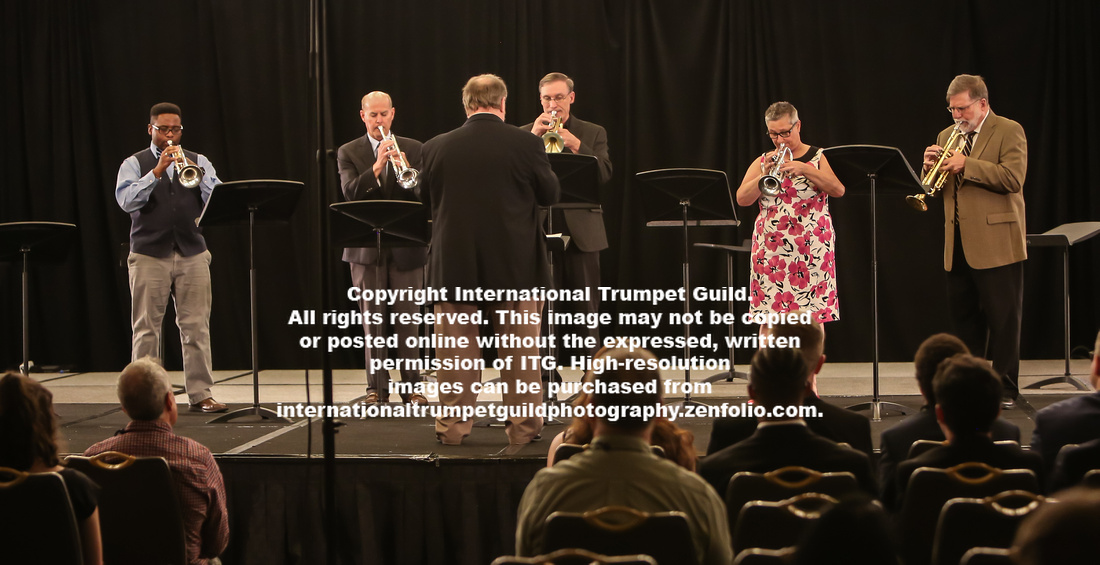

Joe Price’s Westward Ho! brought the thrill and adventure of the Wild West to the concert hall. The tight rhythmic figures driven by the beautiful lyrical lines presented a wonderful dichotomy within the piece. Each of the five performers added their own flair and color to the rip-roarin’ melody as it passed throughout the ensemble.
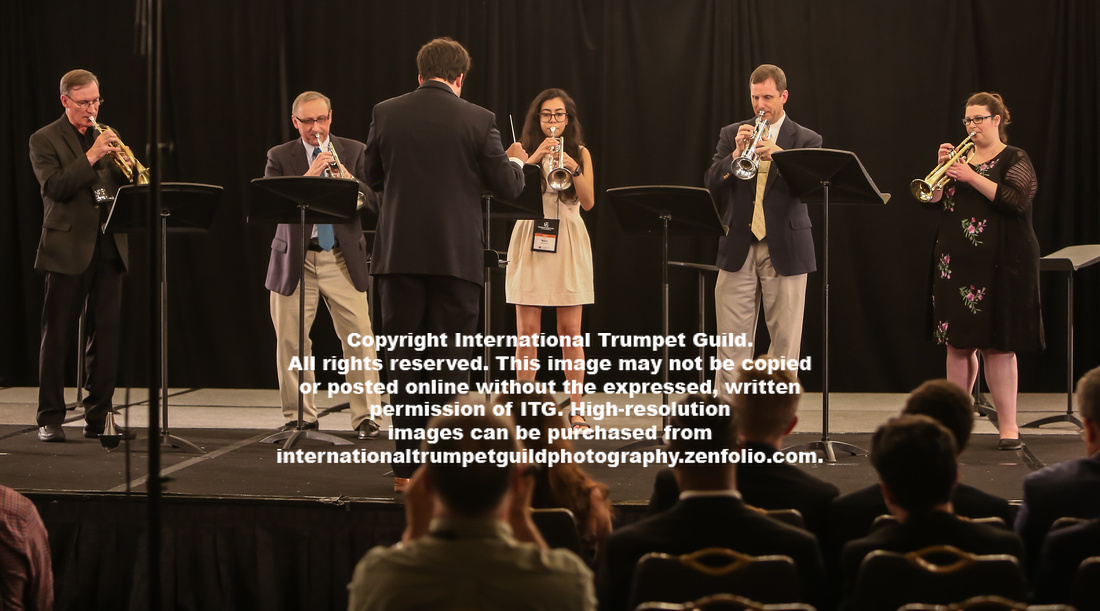

Adrian Kelly’s Inside The Gate: A Fanfare in Blue for jazz trumpet section opened with an ear-catching groove that gave way to more soloistic improvisatory moments for members of the ensemble. The group navigated the difficult shout sections with ease and added a wonderful depth of color to their melodic lines throughout the work.


Engelbert Humperdinck’s famous “Evening Prayer” from Hansel and Gretel, arranged by John Irish, provided a reflective tribute to those who had passed away since the last ITG Conference in 2018. The ensemble’s beautiful sound and color were highlighted by the many lyrical lines and rich harmonies in this famous work.
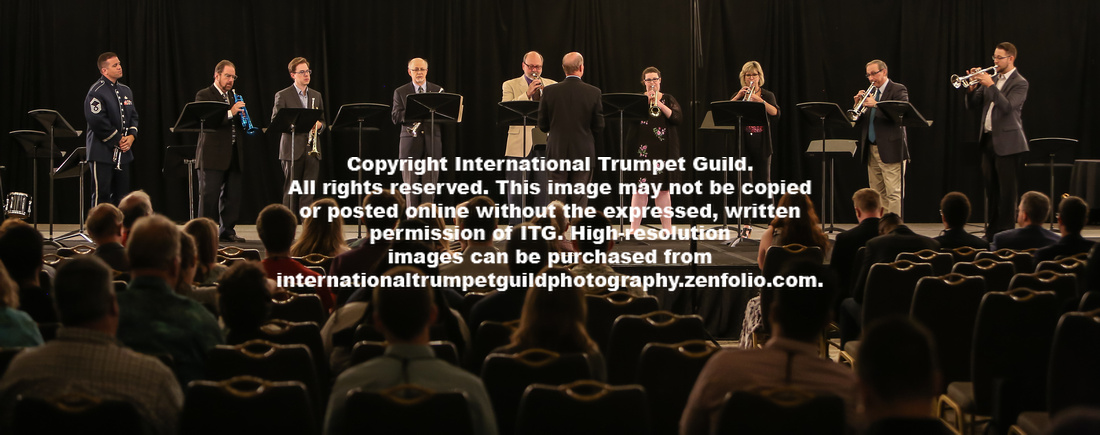

Erik Morales’s Within Sacred Walls provided the audience with yet another reflective composition with its slow-moving melodies and rich timbre. The ensemble presented a beautiful tone and soaring sound as they navigated the piece towards the climactic final notes. Leroy Anderson’s famous The Rakes of Mallow was a wonderful and light-hearted addition to the program. The traditional folk-like melodies were aided by the power of the festive accompaniment. The ensemble presented a fantastic performance that brought several listeners to their feet.
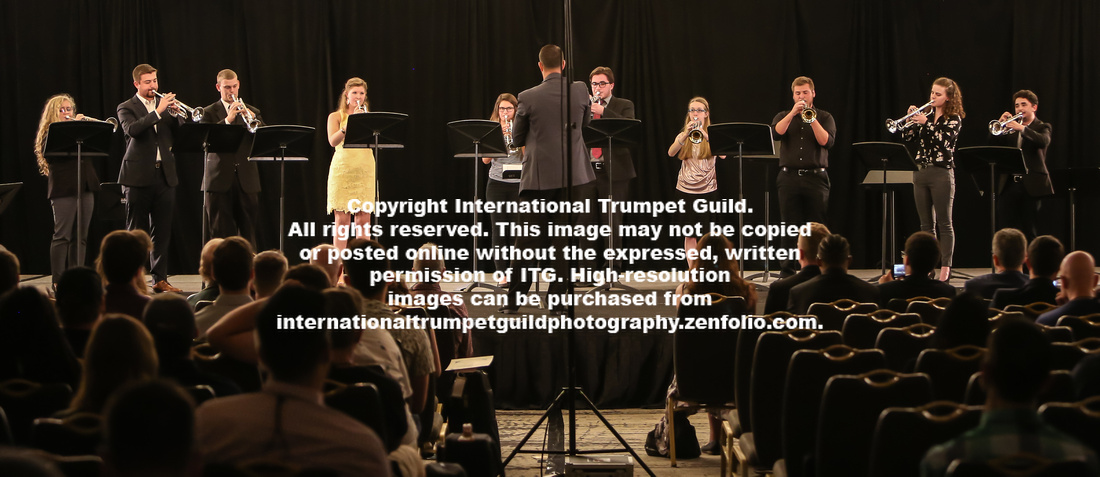

The world premiere of Jason Dovel’s The Legend of Pandora was presented by the Non-Pro Trumpet Ensemble. The work grabbed the audience right from the beginning with a huge punch of chords and swirling motivic lines. The piece presented rich soaring melodies that were separated by small chaotic episodes and ended with exciting fanfares.
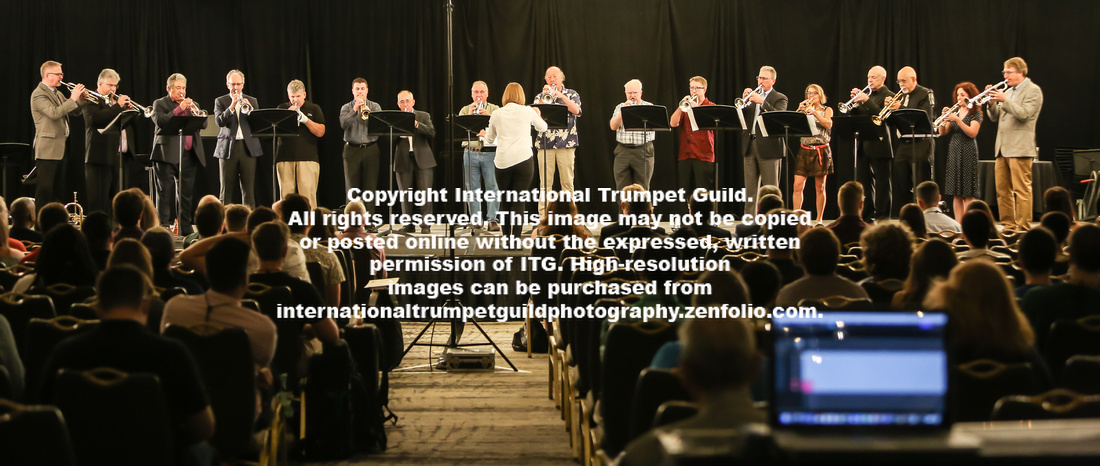

The final piece on the concert featured the largest gathering of performers. James Olcott conducted Michael Serber’s transcription of Poet and Peasant Overture by Franz von Suppe, taking the audience on a musical journey and highlighting the cast of characters from this famous work. The solo lines soared through the rich, beautiful textures of the accompaniment. The climactic moments gave the audience a wonderful and exciting thrill as the sheer size of the ensemble’s sound truly filled the hall. (JPS and PS)
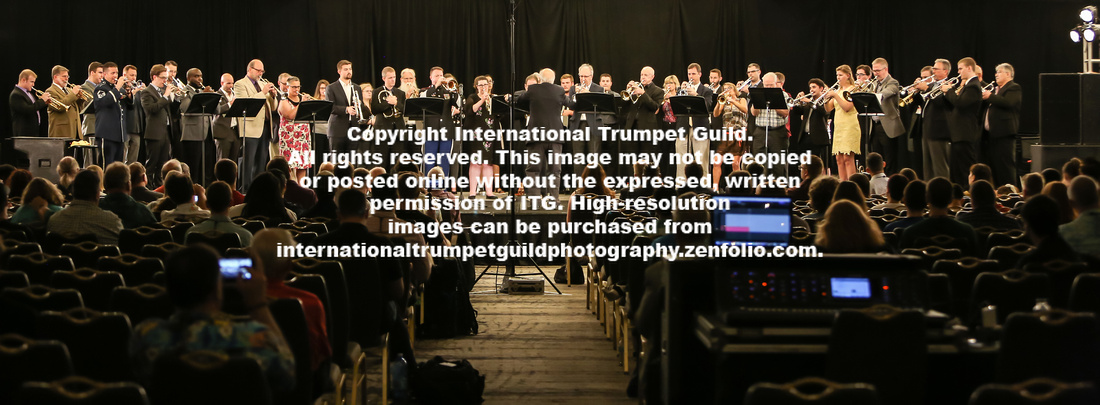

Click here for more photos from the ITG Conference